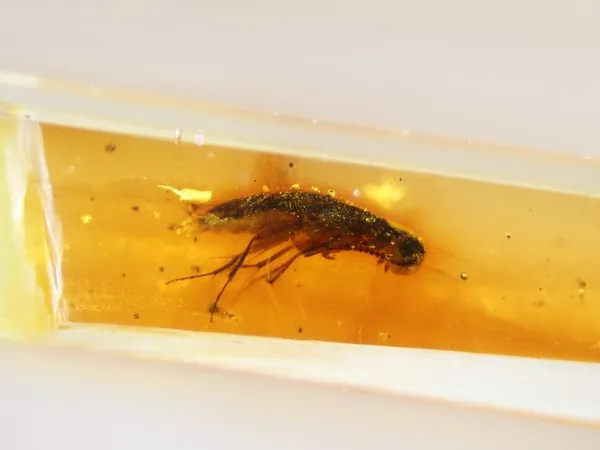
Incredible Discovery: Ancient Ecuadorian Amber Unveils a Hidden World from the Age of Dinosaurs!
2025-09-21
Author: Jia
Unearthing a Cretaceous Treasure
Deep in the lush Amazon rainforest of Ecuador, scientists have stumbled upon an astonishing find: pieces of amber teeming with well-preserved fossils that offer a vivid snapshot of a bustling Cretaceous Period ecosystem from 112 million years ago! This era, famously known as the Age of Dinosaurs, is now more vivid than ever thanks to the hidden treasures lurking within the amber.
What is Amber?
Amber is not just a pretty gemstone; it’s fossilized tree resin that can encapsulate a wide array of creatures and plants. This sticky substance occasionally traps insects, spiders, and other organisms before hardening into an ancient time capsule.
A Window into the Past
The amber pieces were discovered in a quarry near Archidona, Ecuador, and contain an exciting variety of bioinclusions—ranging from biting midges to wasps, beetles, and even remnants of spider webs. Fossilized plants were also unearthed nearby, revealing a rich tapestry of life that once thrived in this region.
A Unique Historical Context
This remarkable discovery marks the largest deposit of Cretaceous amber ever identified in South America. During this time, the region formed part of Gondwana, a colossal landmass that would later fragment into several continents, including South America and Africa.
Insights from the Past
According to Xavier Delclòs, a paleoentomologist from the University of Barcelona, these findings illuminate a historical gap in our understanding of the ecosystem in Gondwana. The diverse insects trapped in the amber offer clues about the ancient food web—some likely fed on the blood of the dinosaurs that roamed the land!
The Marvel of Preservation
Delclòs highlights the exceptional preservation qualities of amber, stating, "Amber captures the exoskeletons of small organisms with such incredible detail that they appear almost lifelike under a microscope, despite being millions of years old." This unique property allows scientists to study organisms that rarely feature in the fossil record.
A Shift in Plant Dominance
The fossils also reveal a crucial period in Earth's botanical evolution. At the site, researchers discovered that flowering plants, known as angiosperms, comprised about 37% of the flora. These plants are currently the most diverse group on the planet, originating during the Cretaceous.
A Glimpse into Ecological Evolution
Delclòs remarks, "This discovery provides invaluable insights into the transition from gymnosperm forests to our modern angiosperm-dominated ecosystems." It’s a captivating glimpse into how life has evolved over millions of years, reshaping the planet as we know it.




 Brasil (PT)
Brasil (PT)
 Canada (EN)
Canada (EN)
 Chile (ES)
Chile (ES)
 Česko (CS)
Česko (CS)
 대한민국 (KO)
대한민국 (KO)
 España (ES)
España (ES)
 France (FR)
France (FR)
 Hong Kong (EN)
Hong Kong (EN)
 Italia (IT)
Italia (IT)
 日本 (JA)
日本 (JA)
 Magyarország (HU)
Magyarország (HU)
 Norge (NO)
Norge (NO)
 Polska (PL)
Polska (PL)
 Schweiz (DE)
Schweiz (DE)
 Singapore (EN)
Singapore (EN)
 Sverige (SV)
Sverige (SV)
 Suomi (FI)
Suomi (FI)
 Türkiye (TR)
Türkiye (TR)
 الإمارات العربية المتحدة (AR)
الإمارات العربية المتحدة (AR)